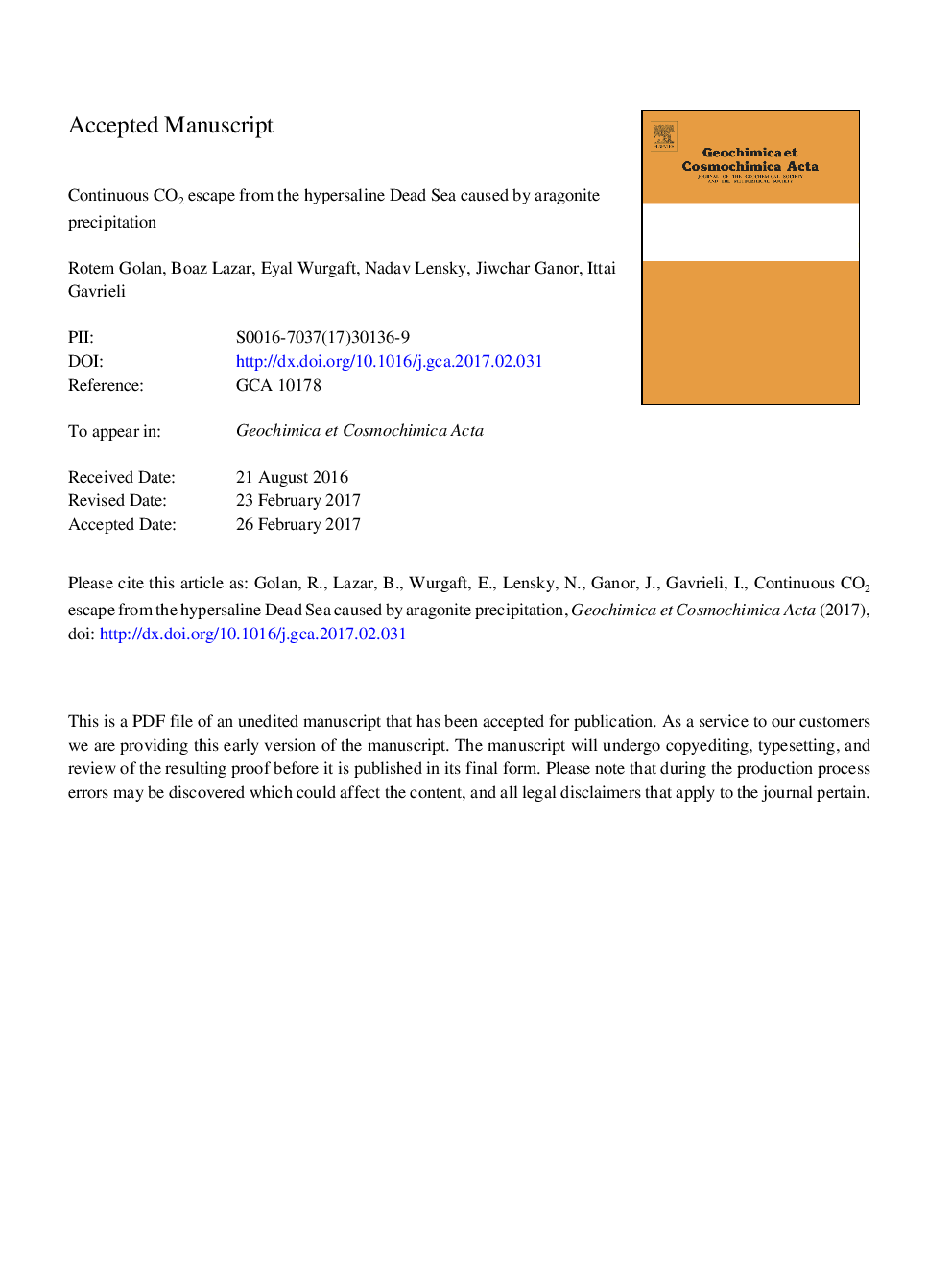| کد مقاله | کد نشریه | سال انتشار | مقاله انگلیسی | نسخه تمام متن |
|---|---|---|---|---|
| 5783519 | 1637950 | 2017 | 34 صفحه PDF | دانلود رایگان |
عنوان انگلیسی مقاله ISI
Continuous CO2 escape from the hypersaline Dead Sea caused by aragonite precipitation
دانلود مقاله + سفارش ترجمه
دانلود مقاله ISI انگلیسی
رایگان برای ایرانیان
کلمات کلیدی
موضوعات مرتبط
مهندسی و علوم پایه
علوم زمین و سیارات
ژئوشیمی و پترولوژی
پیش نمایش صفحه اول مقاله

چکیده انگلیسی
The present study investigates the carbon cycle of the Dead Sea under the current limited water and bicarbonate supply to the brine, representing periods of extremely arid conditions. The decrease of inflows to the Dead Sea in recent years stems mainly from diversion of freshwater from the drainage basin and results in dramatic water level decline and massive halite precipitation. During 2013-2014, bi-monthly depth profiles of total alkalinity, dissolved inorganic carbon (DIC) and its isotopic composition (δ13C) were conducted in the Dead Sea, from surface down to the bottom of the lake (290 m). Mass balance calculations conducted for the period 1993-2013 show that while inventories of conservative ions such as Mg2+ remained constant, the net DIC inventory of the lake decreased by â¼10%. DIC supply to the lake during this period, however, amounted to â¼10% of lake's inventory indicating that during 20 years, the lake lost â¼20% of its 1993s inventory. Compilation of historical data with our data shows that during the past two decades the lake's low DIC (â¼1 mmol kgâ1) and very high PCO2 (1800 ppm V) remained relatively constant, suggesting that a quasi-steady-state situation prevails. In spite of the surprisingly stable DIC and CO2 concentrations, during this 20 year period δ13CDIC increased significantly, from 1.4â° to 2.7â°. An isotopic mass balance calculation together with the high PCO2 of the brine show that during that period the lake lost about 3.7 · 1010 moles of DIC, of which â¼60% by CO2 degassing and â¼40% by aragonite precipitation. The deviation from the common 1:1 CO2:CaCO3 ratio in most aqueous systems is facilitated by the dominance of the borate alkalinity of the Dead Sea. Nucleation and crystal growth experiments suggest that throughout this time the Dead Sea remained supersaturated with respect to aragonite, a situation facilitated by combination of slow nucleation rates and absence of growth surfaces. The very high PCO2 of the Dead Sea is maintained by the low CO2 piston velocity of the brine, calculated to be only â¼4.5 m yrâ1, more than an order of magnitude slower than seawater value.
ناشر
Database: Elsevier - ScienceDirect (ساینس دایرکت)
Journal: Geochimica et Cosmochimica Acta - Volume 207, 15 June 2017, Pages 43-56
Journal: Geochimica et Cosmochimica Acta - Volume 207, 15 June 2017, Pages 43-56
نویسندگان
Rotem Golan, Boaz Lazar, Eyal Wurgaft, Nadav Lensky, Jiwchar Ganor, Ittai Gavrieli,